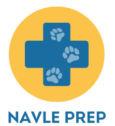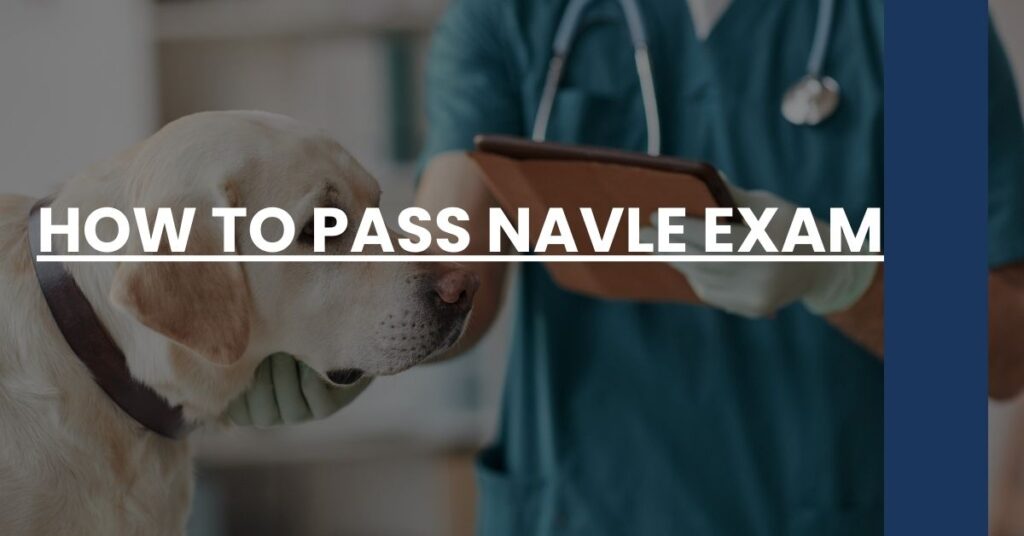How to pass the NAVLE exam requires strategic preparation and a thorough understanding of the process.
- NAVLE Exam Structure: Familiarize with question formats and the test’s comprehensive scope.
- Effective Study Resources: Utilize recommended textbooks and vetted online materials.
- Practice and Time Management: Master sample questions and manage your exam timeline efficiently.
Achieve your goal on how to pass the NAVLE exam with focused efforts and smart planning.
- Understanding the NAVLE
- NAVLE Exam Components
- Study Materials and Resources
- Creating a Study Plan
- Practice Tests and Sample Questions
- Time Management Strategies during the Exam
- Exam Day Preparation
- After the NAVLE: Understanding Your Results
- Additional Support and Guidance
- Conclusion: Final Tips and Encouragement
Understanding the NAVLE
As a veterinary professional, the North American Veterinary Licensing Examination (NAVLE) represents the gateway to your future. Passing this exam solidifies your credentials and allows you to practice veterinary medicine across North America. The NAVLE, an initiative of the International Council for Veterinary Assessment (ICVA), is designed to evaluate your expertise in the field.
What is the NAVLE?
- Objective: To assess the competence of prospective veterinarians.
- Format: Multiple-choice questions.
- Scope: Covers all aspects of veterinary medicine.
The NAVLE isn’t just a test; it’s a comprehensive gauge of your readiness to handle real-life scenarios in the vet world. Imagine the NAVLE as the final boss in your veterinary video game – conquer it, and you’ve proven you’re equipped to embark on a lifetime quest of animal caregiving.
Why is the NAVLE Important?
- Accreditation: Ensures a standardized quality among veterinarians.
- License to Practice: A passing score is essential for a veterinary license.
- Professional Development: Reflects your dedication to lifelong learning and ethical practice.
Think of the NAVLE as your professional passport, a symbol of trust from the veterinary community that says, “You’re one of us—a qualified vet who’s ready to make a difference.”
NAVLE Exam Components
To master how to pass the NAVLE exam, understand its makeup. The exam not only tests your knowledge but also your ability to apply this knowledge in practical situations.
Question Formats
- Clinical Scenarios: Emulating real-life veterinary challenges.
- Visual Aids: Including images and diagrams to interpret.
You’ll encounter a range of questions, from the straightforward to the complex, all designed to push your thinking to the limits.
Content Areas
The NAVLE spans the vastness of veterinary disciplines. You’ll be expected to know about everything from pharmacology to animal ethics.
- Clinical Disciplines: Oncology, cardiology, general surgery—are just a few topics.
- Preventive Medicine: Involving public health and epidemiology.
- Species-Specific Knowledge: Covering both large and small animals.
Approach these sections with the understanding that every question is an opportunity to showcase a facet of your veterinary wisdom.
Study Materials and Resources
When facing a challenge as big as the NAVLE, your choice of study materials is crucial. There’s a plethora of resources out there, but focus on those that align with your learning style and amplify your strengths.
Core Textbooks
- Veterinary Medicine: Classic texts are your foundation.
- Review Books: Summaries and condensed versions for quick refresh.
Remember, the ICVA doesn’t endorse third-party materials, implying the importance of selecting trustworthy sources.
Online Resources
Lean into the digital age with interactive and updated study helps.
- Virtual Flashcards: For on-the-go review.
- Online Question Banks: Mimicking exam conditions to sharpen your test-taking prowess.
Customizing Your Study Approach
- Self-Assessment Tools: Gauge your strengths and weaknesses.
- Practice Exams: Regularly test your knowledge to keep tabs on your progress.
Creating a Study Plan
Your study plan is like a map, guiding every step of your NAVLE preparation. A well-crafted plan not only outlines what to study but also when and how.
Starting Early
- Long-Term Schedule: Begin your preparation several months in advance.
- Steady Pace: Avoid cramming with a consistent study routine.
This slow and steady strategy will cement information deeper into your memory, ensuring you’re ready when exam day arrives.
Personalization
- Unique Study Style: Adapt your plan to your learning preferences.
- Balanced Approach: Integrate study breaks and leisure to prevent burnout.
Your preparation must reflect who you are as a learner—whether that means color-coded notes or boisterous study groups.
Time Management
- Allocate time based on topics’ difficulty and your comfort level.
- Set mini goals to hit daily and weekly milestones.
Each ticked checkbox on your list represents a step closer to passing the NAVLE. Keep that list realistic and flexible, adjusting as necessary. Remember, the key is consistency over intensity.
Support Systems
- Study Groups: Sharing knowledge and strategies.
- Online Forums: Peer support can provide new perspectives and tips.
- Mentors and Advisors: Professional insights can streamline your preparation.
Lean on your veterinary community—they’re your cheerleaders, sounding boards, and wisdom wells.
Practice Tests and Sample Questions
When you’re deciphering how to pass the NAVLE exam, incorporating practice tests and sample questions into your study plan is a game-changer. The adage “practice makes perfect” is especially true when preparing for a comprehensive and demanding exam like the NAVLE.
Importance of Practice Tests
Practice tests galvanize your preparation, serving as a mirror reflecting your current knowledge status and readiness for the actual exam. Let’s delve into why these tools are invaluable:
- Replicating Exam Conditions: You’ll get accustomed to the pressure and the format, reducing anxiety on the big day.
- Time Management Mastery: You’ll sharpen your ability to efficiently allocate time against the slew of questions.
- Direct Feedback Loop: Instantly pinpoint your weak areas and adjust your study plan accordingly.
Effective NAVLE prep hinges on the judicious use of practice tests. Consider them your tactical drills before the main event. They’re not just about answering questions; they’re about building the endurance and finesse needed for success.
Resources for Quality Practice
Finding good-quality practice questions can feel like searching for a needle in a haystack. Fret not. Here’s where to look:
- VetPrep’s Comprehensive Tools: They provide timed exams replicating the NAVLE’s conditions and format, replete with detailed explanations to guide your learning.
- Official ICVA Sample Questions: Dive into what the exam creators deem important. This aligns your thought process with the exam’s psyche.
- NAVLE Prep Books: Many of these have review sections teeming with practice questions, offering you a variety of scenarios to test your acumen.
Leveraging Feedback
The feedback from practice exams is like the code to deciphering how to pass the NAVLE exam.
- Assess Correct Answers: Understand why a certain answer is right.
- Analyze Errors: Dive deeper into the rationale behind your mistakes.
Use this feedback loop to calibrate your studying, knowing that each tweak takes you a step closer to that passing score.
Time Management Strategies during the Exam
The NAVLE is as much a test of your veterinary knowledge as it is of your ability to manage time effectively. Every minute of the exam counts, so understanding how to navigate through questions efficiently is paramount.
Tackling Tough Questions
Don’t let tricky questions derail your momentum. Use a strategic approach:
- Skip and Mark: If a question stumps you, don’t burn precious minutes. Skip it, mark it for review, and return if time permits.
- Educated Guessing: If you’re struggling, eliminate as many wrong options as possible and make an educated guess.
These tactics don’t just save time; they preserve your mental energy for questions you can answer with confidence.
Pacing Techniques
Remember, the NAVLE is a marathon, not a sprint. Your pacing strategy should be methodical:
- Allocate your time according to the number of questions.
- Allow brief moments to reset your focus between sections.
Visualizing yourself successfully keeping pace under the real exam’s pressure is a form of mental rehearsal—a technique used by athletes and top-performers from all fields.
Exam Day Preparation
Proper preparation on exam day itself can tip the scales in your favor. Let’s look at how to pass the NAVLE exam not just through content mastery but also prime physical and mental state.
The Night Before
This isn’t the time for cramming; it’s time for calming.
- Rest Well: A full night’s sleep primes your brain for optimal performance.
- Gather Your Gear: Assemble all necessary materials to avoid a last-minute rush.
- Visualization: Envision a smooth testing experience. It can help ease nerves.
Remind yourself, quality rest isn’t slacking—it’s sharpening your weapon for battle.
The Day Of
On the day of the NAVLE, your preparation shifts from academics to logistics and mental readiness.
- Breakfast of Champions: A healthy, balanced breakfast fuels both mind and body.
- Arrive Early: Familiarize yourself with the testing environment to reduce any jitters.
- Mindfulness Techniques: Deep breathing or meditation can center your focus.
Embrace the challenge; this is your moment to shine as a vet professional.
After the NAVLE: Understanding Your Results
Once you’ve traversed the gauntlet of the NAVLE, the wait for results begins. It’s crucial to comprehend this phase to fully grasp how to pass the NAVLE exam.
Deciphering Your Score
- Score Range: The NAVLE uses a scaled scoring system.
- Passing Benchmark: Understand what constitutes a passing score.
When your results arrive, it’s not just numbers—it’s a reflection of your competence as vetted by industry standards.
Retake Strategy
If you don’t pass the first time, remember, many successful veterinarians have traversed this path.
- Reassess Your Study Techniques: Reflect on what worked and what didn’t.
- Enhance Weak Areas: Use your score report to target deficiencies in your knowledge.
Viewing a retake as another leg in your journey, rather than a setback, can reframe the experience into one of growth and resolve.
Additional Support and Guidance
Throughout your NAVLE journey, the support systems you establish can make a monumental difference.
Study Groups and Forums
- Shared Insights: Exchange strategies and tips with peers.
- Motivational Boost: Study cohorts can keep you driven and accountable.
These collaborations are not just about knowledge exchange; they’re your support network, providing camaraderie and encouragement.
Professional Guidance
Faculty and Mentors: They’ve guided many students to NAVLE success.
Their seasoned perspective is not just advice—it’s the wisdom from years of watching students’ triumphs and challenges on how to pass the NAVLE exam.
Conclusion: Final Tips and Encouragement
As the finish line to your veterinary studies, passing the NAVLE is your initiation into a noble profession. Each element of your preparation, from the comprehensive study materials to the meticulous practice tests, is a building block towards success.
Remember that navigation through the NAVLE isn’t just about memorizing facts; it’s about harnessing a mindset that encompasses discipline, patience, and resilience. Engage with every resource at your disposal, fine-tune your approach with every mock exam you take, and enter the testing center with confidence earned through relentless preparation.
In your quest on how to pass the NAVLE exam, let these words resonate: it’s an arduous journey, but an achievable one. You are equipped, you are prepared, and you will succeed.
How to pass NAVLE exam: Essential tips, study strategies, and comprehensive resources to ensure success for aspiring veterinarians.

